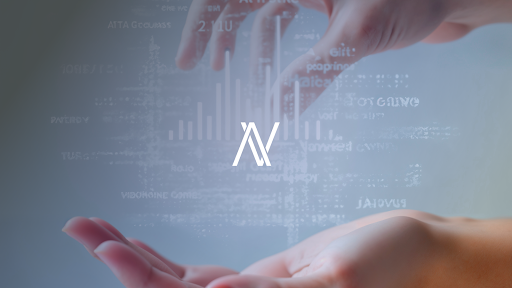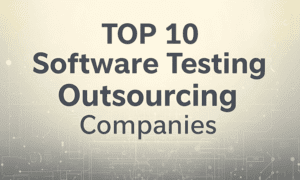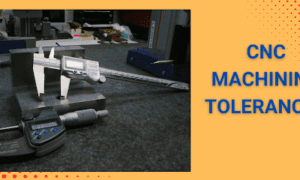How decentralized infrastructure is redefining enterprise durability in an unpredictable world
In an era defined by disruption—pandemics, supply chain breakdowns, cyberattacks, and platform failures—the ability to withstand and adapt is no longer optional for businesses. For entrepreneur and blockchain strategist Alessio Vinassa, resilience isn’t just a protective measure it’s a competitive advantage. And increasingly, it’s being built on blockchain foundations.
“Blockchain doesn’t just offer an alternative,” says Vinassa. “It offers a foundation for building business systems that are no longer dependent on single points of failure. It enables a new model—collaborative by design and antifragile by nature.”
More than a buzzword, blockchain is emerging as a core technology for the development of open, secure, and decentralized business ecosystems capable of scaling and surviving in a volatile, international economy.
Redefining Resilience for the Digital Age
Traditional corporate infrastructure was built around centralized control—cloud servers, payment processors, supply chain hubs, and single-party data ownership. While efficient in stable conditions, these systems collapse under pressure, exposing organizations to bottlenecks, blackouts, and breaches.
Blockchain introduces a radically different architecture for business growth: one that assumes failure is inevitable and designs resilience from the start. Its benefits include:
- Redundancy through distributed nodes
- Transparency via immutable records
- Autonomy through programmable smart contracts
- Interoperability across networks and borders
These attributes turn fragile systems into adaptive ecosystems—allowing businesses to recover faster, operate securely, and collaborate globally.
Use Cases: Resilience in Action
Blockchain’s potential isn’t hypothetical—it’s already being applied across key sectors to enhance resilience:
1. Supply Chains
Blockchain enables real-time, tamper-proof tracking of goods across suppliers, manufacturers, and distributors. This enhances transparency and reduces fraud or counterfeiting. During the COVID-19 crisis, companies using blockchain-based logistics saw faster issue resolution and fewer disruptions.
A report by IBM found that 84% of firms implementing blockchain in supply chains gained greater transparency, while 60% reported improved operational agility.
2. Healthcare
Patient data stored on decentralized platforms allows secure, permissioned access—protecting privacy while enabling cooperation among hospitals, labs, insurers, and researchers. This is critical during emergencies, when rapid, reliable information sharing can save lives.
3. Finance
Decentralized financial infrastructure allows for uninterrupted global transactions, even when centralized platforms fail. Blockchain-powered platforms maintained uptime during events that paralyzed traditional systems—demonstrating a new kind of digital durability.
4. Infrastructure and Energy
Blockchain-based microgrids facilitate peer-to-peer energy trading and load balancing, reducing vulnerability to centralized outages. These systems are already in use in disaster-prone regions, offering a more responsive and democratic energy model.
Why Decentralization Matters
Centralized systems function well—until they don’t. A single point of failure can bring down an entire operation. Blockchain’s decentralized model, by contrast, distributes authority and redundancy, turning risk into resilience.
“Decentralization builds in fail-safes,” Vinassa notes. “It’s not about eliminating disruption—it’s about designing systems that recover and adapt.”
This model allows organizations to:
- Operate securely across multiple regions
- Continue functioning even if one node fails
- Minimize dependence on external providers
- Align incentives across diverse stakeholders
It’s a new kind of innovation—not faster, not flashier, but more robust.
Scaling Without Sacrificing Stability
One of the most compelling myths about resilience is that it slows down business growth. Blockchain challenges that assumption. In fact, the more decentralized participants join a blockchain ecosystem, the stronger and more efficient it becomes.
- Redundancy increases across nodes
- Consensus validation becomes more secure
- Network effects amplify performance and value
Protocols like Ethereum, Cosmos, and Polkadot are creating scalable systems where expansion doesn’t mean centralization—it means smarter distribution.
Toward Antifragile Business Models
Blockchain does more than preserve business functions under stress—it helps organizations improve in response to it.
From dynamic DAOs (Decentralized Autonomous Organizations) to on-chain governance mechanisms, blockchain allows real-time feedback, iterative upgrades, and community-driven development.
“This is the future of digital business,” says Vinassa. “Systems that evolve as they’re used, shaped by people—not policies.”
Such adaptability supports business growth without sacrificing governance, transparency, or integrity.
Hurdles to Overcome
Despite its promise, blockchain-powered resilience comes with real challenges:
- Regulatory clarity remains uneven globally
- Legacy integration is slow across industries
- User experience needs refinement for broader adoption
- Governance frameworks are still maturing
Yet these are hurdles of transition, not permanence. As standards evolve and more institutions adopt blockchain, its role as a resilience layer will become indispensable.
A Strategic Imperative
For entrepreneurs and enterprise leaders, the shift toward decentralized architecture is not just a tech choice—it’s a mindset shift.
“Resilience isn’t a Plan B,” Vinassa emphasizes. “It’s a design principle. And blockchain is the most effective tool we have to implement it.”
The organizations that embed resilience at the protocol level won’t just weather volatility—they’ll set the pace in uncertain markets.
Conclusion: Designing Resilient Ecosystems for a Global Future
The nature of disruption has changed. So must the nature of the systems we build. Blockchain offers more than decentralization—it offers a framework for innovation, security, and collaboration in a world defined by complexity.
With visionaries like Alessio Vinassa leading the charge, blockchain is not just powering the next wave of digital transformation—it’s redefining how resilient, future-ready organizations are built.
“We’re moving from backup plans to built-in resilience,” says Vinassa. “And the businesses that embrace that shift now will lead in the decades to come.”
To know more about Alessio Vinassa and his business philosophies, visit his website at alessiovinassa.io.
You can also find and follow him on the following social platforms:

































